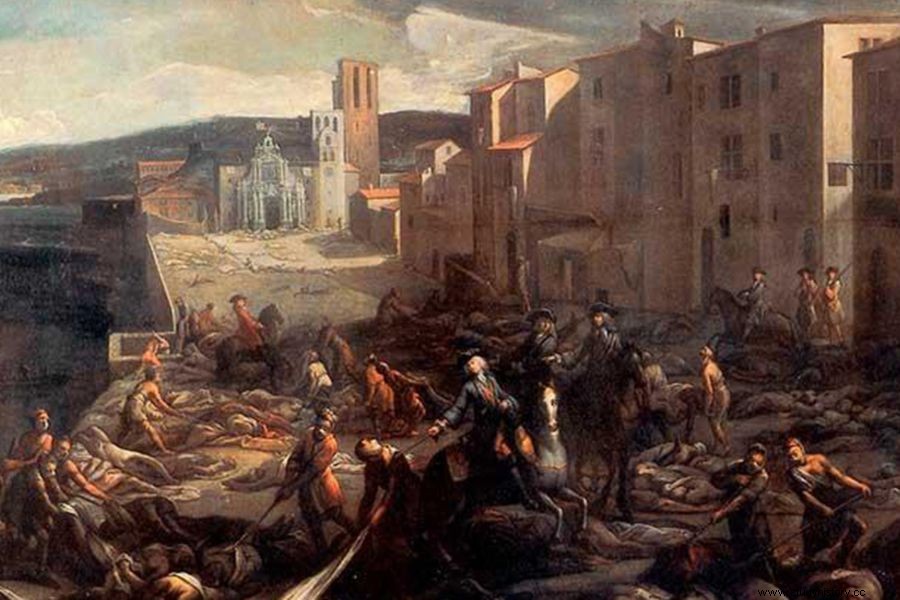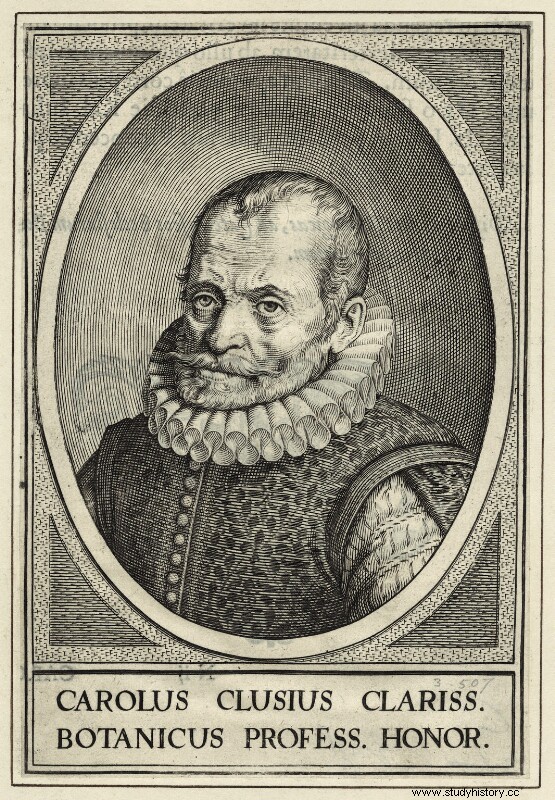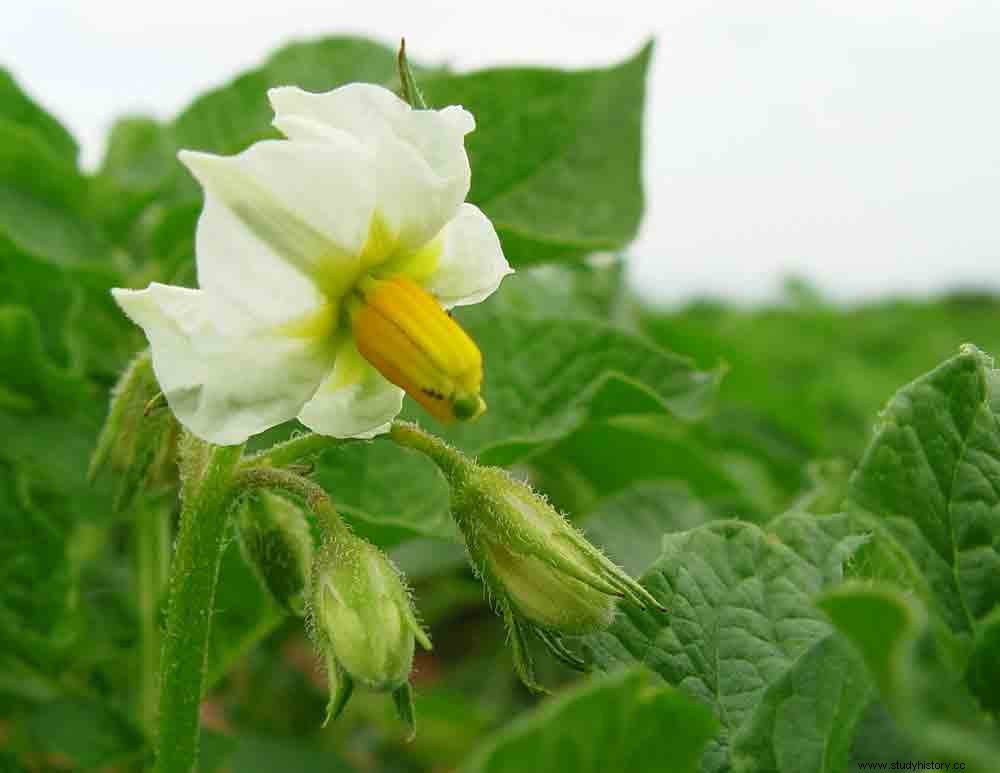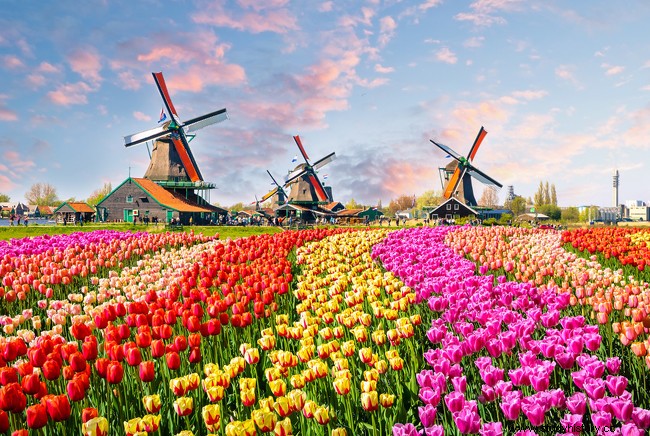It was not the (black) plague of the 14th century, but a later outbreak in the 17th century that, for example, in England killed almost 100,000 people and more than a fifth of the population of London.
3 or 4 days ago I saw an unburied corpse in a coffin on the street... the plague is making us cruel (a chronicler of the time wrote).
Interestingly, he arrived in the British Isles aboard Dutch merchant ships, where this story takes place.

In the 17th century, Holland experienced a speculative increase in prices in the market for the sale of tulip bulbs. This speculation, which caused some bulbs to be sold for thousands of guilders (up to forty times the average annual income of a person at the time), created the first economic bubble in history. A bubble that, when it burst (in a single day) in 1637, left thousands of Dutch bankrupt. The economic crisis generated by the fall in the prices of tulips, the panic and the ruin of many citizens finally led the Dutch economy to bankruptcy.
It's funny how tulips got to Holland, since the flower actually originates from Turkey and got there by rebound. It seems that everything is due to a certain Ogier Ghislain de Busbecq , who during the 16th century was the Austrian ambassador in what is now Turkey, at that time belonging to the Ottoman Empire. Ogier was apparently very fond of floriculture, so on his return to Europe he brought back some tulip bulbs to plant in the imperial gardens in Vienna. Years later, the Holy Roman Emperor, Maximilian II of Habsburg, appointed Charles de L’Ecluse as court physician and head of the imperial garden. (Carolus Clusius for the classics) his new position allowed Charles to travel throughout Europe, collecting and collecting plant specimens. The stars of his collection were, because of their rarity, the tulip and the potato. Yes, yes, the potato. Which also has its particular history.

As you all know, and if I haven't already told you, potatoes originate from the American continent, specifically from the highlands of the Peruvian Andes. The Incas used them as food directly or to make the chuño , a kind of puree that is stored for times of bad harvests and that remains suitable for consumption for 10 years. In addition, it was also used for medicinal purposes. In fact, the first shipment of potatoes to arrive in Europe was sent by the governor of Cuzco (Peru) to Felipe II, the king of Spain, in 1565 for its medicinal properties. In 1573 it was administered to patients at the Hospital de la Sangre in Seville. Even Philip II, who had maintained a cordial relationship with Pope Pius IV since the Council of Trent, decided to send him part of the shipment as a remedy for his ills, since the man was a little touched. And the pope, -who was one of those who, when it rains, shares his umbrella, and if he doesn't have an umbrella, he shares the rain-, decided to share the batch of tubers with his friend, the Dutch Cardinal Philip de Silvry, the man was also screwed . It must not have gone badly for the cardinal, but the pope died that same year. And following the trail of the potatoes, hand in hand with the cardinal, they reached the Vienna botanical garden where they were studied and from where they spread throughout Europe. But it would still take years for Europeans to see potatoes as a regular consumer product. In fact, it was more normal to see a pig eat potatoes than a European. Of course, its flowers used to be used as an ornamental element in their houses.

And returning with L' Ecluse, in 1593 and already 70 years old, he accepted a position as professor of botany in the Netherlands. So good old Charles went off to spend his old years teaching botany while spending his leisure hours tending to his plant collection. Jealous of the crown jewels in his greenhouse, he kept the tulips safe. But someone broke into his garden one night and stole the bulbs. The thief must have had the spirit of Robin Hood, because tulips began to be seen all over Holland. As there is also the circumstance that sandy soils are apparently ideal for growing this plant, and Holland has plenty of that because most of it is land reclaimed from the sea, in the end the flower spread throughout the country.

Surely you already know that tulips are grown from bulbs, from which other bulbs come out which, when cut, give rise to a complete flower identical to the one produced by the original bulb. There are many common varieties of tulips and of different colors, but in all of them the flower has a single color. However, sometimes something unexpected happens and a normal bulb gives rise to tulips with strange mixtures of colors. Unique varieties, impossible to repeat... unless they are obtained from the original bulb. Now we know that this is due to a virus inoculated by the plant aphid, but of course, in the 17th century the Dutch knew nothing about viruses and the origin of these rare and beautiful varieties was a mystery. As the tulip only blooms for a few weeks in spring, during the rest of the year the bulb can be transported, sold, bought or exchanged very easily. And with all this in mind it is easier to understand what happened in Holland in the 1630s.

When the Dutch began to take a liking to the cultivation of tulips, the most beautiful and strange varieties began to be quoted at important prices, and tulip bulbs began to generate a growing and increasingly uncontrolled market. Suddenly, overnight, some varieties began to sell for real fortunes. Houses, fields or farms were paid in exchange for a single bulb. And not only that, but bulbs that had not even been harvested yet began to be bought and sold, which in economics is known today as “futures market ”. Well, the Dutch gave it a much more descriptive name:“air business ”. And we come to 1636, when a terrible outbreak of plague spread throughout Europe and seriously affected Holland, decimating the workforce. And of course, as there were fewer hands to grow and harvest bulbs, their price ended up skyrocketing… even more. There were no longer even enough properties to pay the "value" of the bulbs:assets were mortgaged, enormous loans were requested, years of work were offered as payment... And often on a bulb that had not yet been harvested. Suddenly, the price of tulips began to plummet:the bubble had burst. Terror gripped all the investors who had tulip bulbs. Everyone wanted to sell them and recoup their investment before they found themselves bankrupt and still in debt for years on something that no longer had any value. There was no way, nobody gave a florin for a tulip. Bankruptcies began to happen, first families and small businesses, then wealthy merchants and large trading companies. Laws were enacted that canceled future purchases in exchange for the payment of a small fine, and lawsuits for non-compliance followed one another. But nothing could be done now. Finally, within a few weeks of the market crash, the inability to meet debts and widespread panic drove the Dutch economy into bankruptcy.
It is clear that the plague does not understand speculation and the futures market, and what also seems evident, I refer to the tests, is that we did not learn the lesson, because this bubble presented a pattern that has later been repeated as the origin of various economic crises throughout history.
